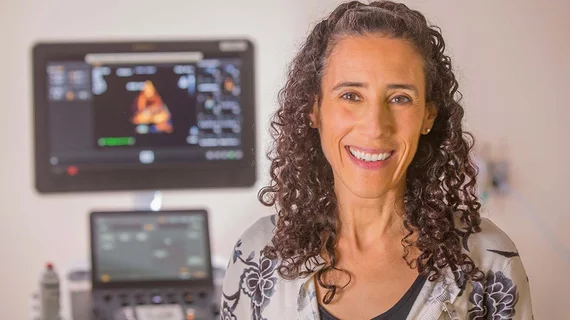The U.S. is a true melting pot. In 2014 alone, more than 1 million immigrants gained legal permanent residence within its borders. But with that distinction comes an ever-changing set of health concerns that physicians must help treat and manage.
The latest, according to a recent article in the journal Circulation, is Chagas heart disease. Caused by the parasite Trypanosoma cruzi, it is most often transmitted by so-called "kissing" bugs and can lead to cardiomyopathies and other heart-related complications if left untreated. The disease is prevalent in Latin American communities with inadequate housing. Bolivia currently has the highest prevalence of Chagas, with approximately six of every 1,000 people infected with T. cruzi.
South American immigrants have experienced the largest population growth in the U.S., increasing from 90,000 in 1960 to 2.9 million in 2014, according to the Migration Policy Institute, is an independent, nonpartisan, nonprofit think tank in Washington, D.C., dedicated to analysis of the movement of people worldwide.
Given the recent influx of immigrants from that part of the world, the U.S. now has the seventh highest prevalence of Chagas infections in the Western Hemisphere. It is estimated that more than 300,000 infected individuals are currently living in the U.S.
The condition requires far more aggressive treatment than do other forms of cardiomyopathy, said Rachel Marcus, MD, an echocardiographer at the Medstar Washington Hospital in Washington, D.C., and medical director of the Latin American Society of Chagas.
“If you don’t believe the diagnosis exists, you will never diagnose,” Marcus said in a statement. “You have to start thinking about it.”
By the time the arrhythmias and other abnormalities start, patients have likely been infected for 15 to 30 years. At this point, there is no cure, Marcus said.
Treatment with benznidazole, an anti-parasitic treatment, can cure patients with Chagas early in the course of their infection. According to results from the BENEFIT trial, once patients have progressed to develop Chagas cardiomyopathy, treatment can reduce the number of parasites but won’t stop overall cardiac decline.
Chagas acts differently that other cardiomyopathies, Marcus said. The parasites become embedded in the heart, which affects cardiac conduction. Patients also develop slow heart rhythms as well as inflammation and scarring in the heart.
As a proactive measure, patients who have lived in Chagas-endemic countries should be screened. Testing should be performed in coordination with the US Centers for Disease Control and Prevention, which can provide the two tests needed to diagnose Chagas.
Marcus hopes to develop an inexpensive rapid test for Chagas that could make the identification process easier.
“It’s preventative medicine at its best,” Sheba Meymandi, MD, director of the Center of Excellence for Chagas Disease at Olive View University of California-Los Angeles Medical Center, said in a statement. “If you diagnose and treat early, you don’t have to deal with the long-term complications of Chagas.”
Related Chagas Disease Content:
Chagas disease increases the risk of CVD
Algorithm unmasks bugs bearing diseases
Chagas disease among topics at HRS 2019
AI, microscopic imaging mobile device detects parasitic infections in 20 minutes
RSNA 2016: How imaging can help treat Zika, other tropical diseases
